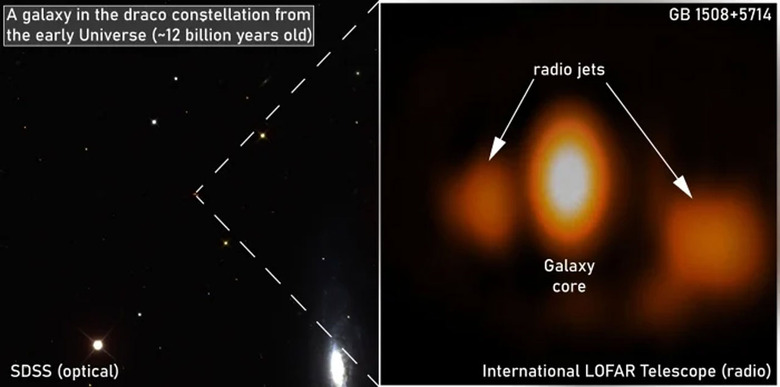New And Extremely Detailed Images Of Distant Galaxies Are Beautiful
Astronomers issued some extremely detailed and beautiful images of distant galaxies. The images offer detail not seen in images of these galaxies in the past. While the images are certainly beautiful to look at, their incredible detail gives astronomers insight into how galaxies work.The observations were made using the Low Frequency Array (LOFAR), the biggest low-frequency radio telescope network on the planet. LOFAR consists of a whopping 70,000 antennas located across Europe. The array uses radio interferometry, allowing it to make some of the most sensitive radio observations possible.
The incredible resolution of the recently shared images from LOFAR are thanks to the fact that the entire array was used compared to the standard LOFAR array that relies only on antennas in the Netherlands. Using the full array effectively makes the observations using a telescope aperture about 2000 kilometers wide rather than the typical 120 kilometers in size.
By harnessing the complete LOFAR array, radio astronomers could deliver images with 20 times the resolution typically seen. Nine different papers were published using data collected by the radio array that looks at relativistic particle jets shot into intergalactic space by active supermassive black holes residing at the center of the observed galaxies.

Those particle jets can't be viewed in optical wavelengths but glow brightly in infrared. The area around an active black hole is extremely dynamic, with material creating an accretion disk that circles the black hole like water swirling down a drain. Scientists admit there's a lot they don't understand about the process that creates the particle jets. The new data gathered by LOFAR will help scientists learn more about the phenomena. One of the galaxies analyzed is called 3C 293, featuring huge radio lobes suggesting the supermassive black hole has had at least one dormant phase.
